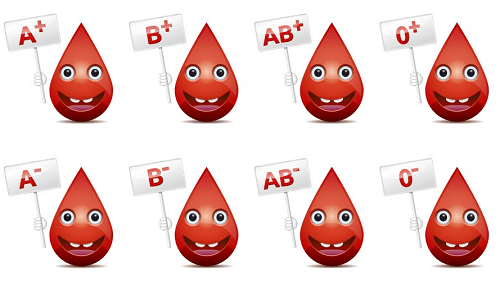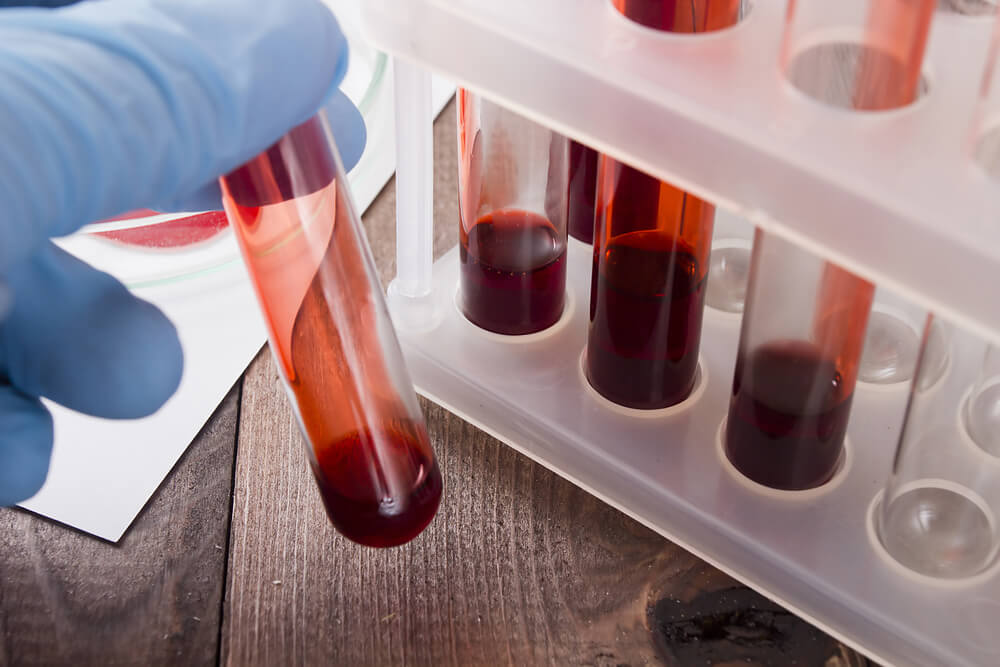5 Important Reasons to Know Your Family Members’ Blood Types

It’s a well known fact that blood types are necessary information in a medical emergency where a transfusion is required.
However, there are other important reasons why you should know the blood type of all of the members of your family.
How are the different blood types classified?

Although medical science still does not know how to explain why we have different types of blood, the truth is that we know a lot about its operation and composition.
There are four blood groups classified according to the presence or absence of proteins on the surface of red blood cells:
- A, the group that contains the protein A;
- B, whose characteristic is that it has the protein B;
- AB, which is distinguished because it presents both proteins;
- O is the group that lacks both proteins.
Besides that, we have the RH factor: if there is the presence of the RH protein in the blood, it is classified as positive RH. The absence of this results in negative RH.
Our blood type is made up of both our group and our RH. For example, a person with a blood group A and presence of RH will have a blood type A-RH positive (A +).
See also:
9 Blood-Cleansing Herbs and Spices
Why should we know the blood type of our relatives?
As already mentioned, in the case of transfusions and donations, knowing your blood type is crucial.
Plus, while patients of all blood types can receive blood type O-RH negative (O -), a patient with O-RH negative can only get transfusions from their own type.
There are also other equally important medical reasons for knowing the blood type:
1. Detecting a predisposition for deep vein thrombosis

These clots, if not properly treated, can travel to the lungs and endanger one’s life.
After analyzing data on some 66,000 people for more than 30 years, a study showed that people with blood type A, B and AB had a 40 percent higher risk of DVT compared to people with type O.
2. To know if someone in your family is prone to heart problems
According to studies, people with an AB blood type have a 23 percent higher risk of heart disease, compared to people with the O blood type.
- Those with type B blood had an 11 percent increased risk; while those with type A blood had a 5 percent higher risk.
- A greater predisposition to higher cholesterol was also discovered in people with the blood type A.
- On the other hand, people with type O blood have the lowest risk of heart attacks.
Fortunately, these genetic predispositions can be controlled by following a healthy lifestyle and adopting dietary measures that help minimize the risks for you and your family.
We recommend you read: 6 Eating Habits to Adopt for a Healthy Heart
3. The tendency to present certain types of cancer

According to a study carried out in 2015, the risk of stomach cancer is higher in people who have type A blood, in contrast to people with the blood type O.
In contrast, those of the blood type O are more prone to stomach ulcers.
On the other hand, having the blood types B or AB increases the risk of developing pancreatic cancer.
4. Detecting problems related to reproduction
Women with type O blood are twice as likely to have low ovarian reserve due to high levels of the FSH hormone, which can lead to infertility.
As for pregnancy, in pregnant women, incompatibility with the blood of the fetus can occur if they do not have the same RH (positive-negative).
This can cause the woman’s body to react as if it were allergic to the fetus, which can damage it. The solution is an injectable medicine.
5. Planning your family’s diet

However, people who have tried this diet talk about favorable results when losing weight and keeping energy levels up.
The diet consists of the following:
- Type O: You can eat meat, fish, fruit and vegetables; it is recommended to limit the consumption of grains, legumes and pulses.
- Type A: The best foods for this type are vegetables, tofu, fish, seafood, grains, beans and fruit. You should limit your consumption of meat, dairy, limes and wheat.
- Type B: All the meats agree with them, except chicken. It is also recommended that they consume dairy products, beans, grains and vegetables.
- Type AB: They can eat fish and seafood, dairy, beans, fruits and vegetables, all in moderation; although they should avoid red meats.
All cited sources were thoroughly reviewed by our team to ensure their quality, reliability, currency, and validity. The bibliography of this article was considered reliable and of academic or scientific accuracy.
- Amjadi, Omolbanin & Rafiei, Alireza & Ajami, Abolghasem & Valadan, Reza & Hosseini-Khah, Zahra & Hajilooi, Mehrdad & Janbabaei, Ghasem. (2015). Blood groups: In Health and Diseases. Res Mol Med. 3. 10.7508/rmm.2015.04.001.
- Kodumuri, Dr. Praveen & Singh A, Purna & S Rathod, Shivanand & JM, Desai & Nagose, Vaishali. (2014). A Complete Review Article on ABC of Blood Groups. Asian Journal of Health Sciences. 2. 45-9. 10.15419/ajhs.v2i1.426.
This text is provided for informational purposes only and does not replace consultation with a professional. If in doubt, consult your specialist.








